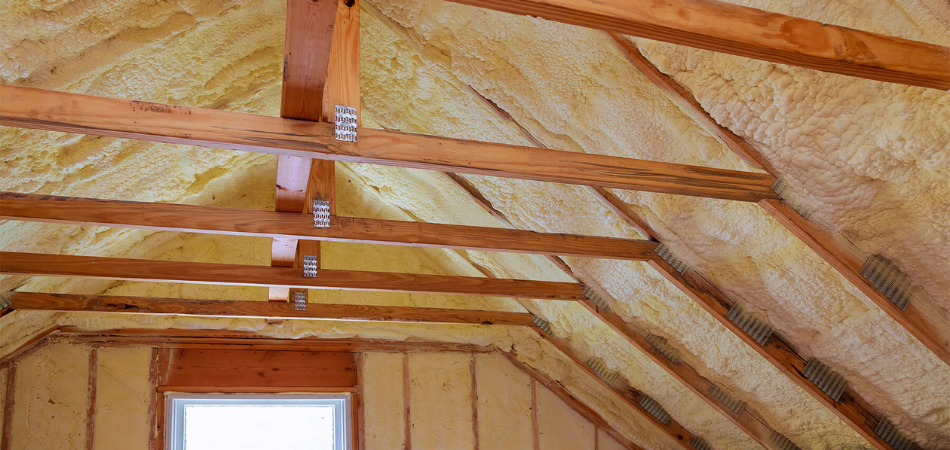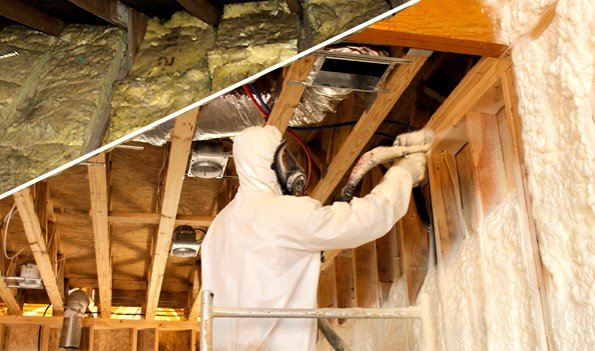Insulation with spray foam is a convenient and effective option to keep your attic cool and control its temperature. By insulating the attic with spray foam, you can reduce the heat of your attic on average to 35% lower than the outside.
But, the problem is humidity. It’s hard to control the humidity even in a spray foamed attic, which may result in mold and mildew in your attic. That’s why it’s crucial to manage the humidity level in your attic.
Now, you might be curious to know: how to manage humidity in your spray foamed attic? There are many ways to control the humidity that I’ll describe below, but the most effortless process is installing a dehumidifier.
Stay tuned with me until the end of this article, to get the answer to this query and other relevant information.
What Causes Of Humidity In Your Spray Foamed Attic?
Sealing your attic with spray foam is a great investment to control the temperature and humidity. It helps to reduce the temperature to a certain level if you seal your attic properly with spray foam.

However, sometimes you might encounter high humidity in your attic after doing everything in the right manner. There are a lot of factors that cause humidity in your spray foamed attic. But the main culprit is the moisture that enters your attic and can’t get out.
Below, I’ll show you some of the common causes of humidity in your spray foamed attic.
1. Leaks
Air leak is the most common cause of excessive humidity in the spray foamed attic. If there’s any smallest leak remaining after sealing the attic with spray foam will let the outside air enter your attic and increase the humidity.
2. Pressure Issue
Pressure issues are another reason for high humidity in a spray foamed attic. There are a lot of factors that put negative pressure and increase humidity. For example, if there is any leakage in your duct system might pull the air from the attic and produce a negative pressure environment.
3. Everyday Activities
Sometimes your daily activities could be the reason for the increased humidity in your spray foamed attic. If you’re wondering how then let me tell you the facts. Your everyday activities such as cooking, running the washing machine, taking shower, etc. may increase the moisture level in your house.
With the airflow, they will reach the attic, and due to strong sealing of spray foamed moisture gets trapped inside the attic. And, the trapped moisture causes high humidity in your attic.
How To Manage Humidity In Your Spray Foamed Attic?
Attics are used in different ways by different people for different purposes. You could use it as an active part of your house or just for storage. However, it’s completely up to you, how are you going to use your attic? But one thing you’ll surely want to make sure of is to keep your attic cool and free from high humidity, mold, and mildew.

By insulating with spray foam you can significantly reduce the temperature of your attic from 120° to around 95° in the middle of hot summer. The only complexity that you may encounter with your spray foam attic is managing its humidity.
During the fall, summer, and spring the relative humidity inside your spray foam attic sometimes exceeds the level of comfort in between 60%. When the relative humidity level exceeds too much for too long, you’ll experience mold growth because of humidity.
Now the question is: how to manage humidity in your spray foamed attic? Well, stay with me till the end of this section and I’ll show you how you can manage the humidity of your spray foamed attic.
1. Sealed Your Attic Properly
Sealing your attic properly is a crucial task of your home improvement projects. The better you do this job the more you have control against humidity. Stand behind your contractor while they spray foaming your attic to ensure they’re not deceiving you.

Observe While They Working
Your contractor may neglect their task but you need to observe their task to remind them what their job is. Make sure they complete the spray foaming task from inside and outside of the house.
Remember, proper spray foaming is not just spraying the foam all over the top of the attic. It’s crucial to identify the air leakage from the outside as well and seal them properly. If you fail to do that, the humidity will rapidly crawl into your attic.
Identify The Air Leakage
You need to put special attention to the soffits and gable vents as they could be the main culprit of air leakage. You should also identify other cracks and gaps that could let the outside air in.
Don’t rely on your contractor statement, check it by yourself and make sure all the areas are sealed properly. If you find any leakage, call them back and ask them to finish their job.
2. Look For Negative Pressure
Sometimes the mechanical system of your house creates a negative pressure environment that could increase the humidity level in your attic. Check the following examples:
Duct Leakage
If there is any leakage inside your duct, it’ll suck up the air from your attic into the HVAC systems. As a result, your attic will refill with outdoor air and which will ultimately increase the humidity.
Mighty Kitchen Fan
Some of us install a robust kitchen fan inside our kitchen that can move air 1000 CFM or higher. If you’ve got the same one then it can pull the air from your attic to your home every time you turn it on. On the other hand, your attic will refill with outdoor humid air.
How To Identify The Problem
Now the question is, how can you determine whether this is happening in your house or not? Well, there’re a couple of ways, one of them is the duct blaster test. You can also do a blower test to measure the pressure balance of your house.
After completing the duct testing, if you find any leakage, seal up the duct properly and ensure a proper pressure balance in your home. Now check the level of humidity in your attic. You can use a humidistat for that. If you want to get more details you can set up RH sensors that’ll show you the humidity level in the graph.
Through this, you can identify when the humidity increases in your house at which time. Consequently, you can figure out what certain activities are responsible for that. (such as your kitchen fan.)
3. Set Up A Dehumidifier For Your Attic
After sealing your attic with spray foam and ensuring the proper pressure balance, you’ve done the 90% of your task for managing humidity. However, it’s still possible that you’ll experience high humidity in your attic after completing all the above tasks. So, what’s the solution?

Well, in such situations, the best solution is to install Portable attic dehumidifiers. You just need to place the dehumidifier up there and set RH between 50-60% and your job is done.
Make A Water Drainage System
Surely, you don’t like to go into the attic twice a day to remove the disposed water from your dehumidifier. If so then you need to set up a water drainage system to remove the water from the dehumidifier reservoir. It’s better to go for a unit that has a self drainage system with a dedicated condensate drain.
Final Words
Attics get humidified for many reasons. I have described some reasons above in this article. However, if you know: how to manage humidity in your spray foamed attic, you can enjoy the attic space whenever you need it.
Earlier in the article, I have shown you some ways through which you can manage the humidity of your attic. Among all the ways the most easiest and effective process is using a dehumidifier. A humidifier could help you a lot to alleviate the high humidity and prevent the moisture from flowing in.
